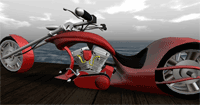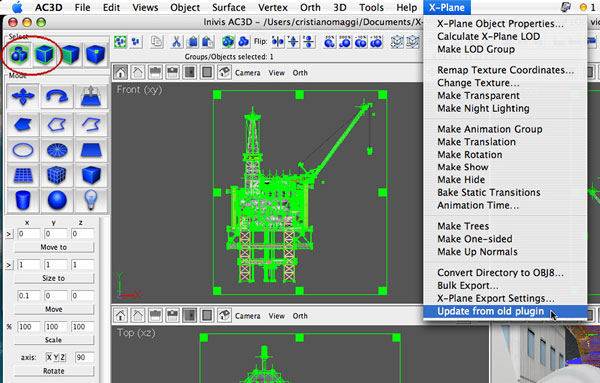

In GRASS 6 it is possible to create 3D vector files, i.e.

In the "typical" case, "z" data is stored as a non-spatial attribute in a vector point map. Historical note: known as "site data" in GRASS GIS 5 Isosurface 500 Ĭhange main view height to 125.00 (manual entry) Here is the file that this script creates: vox_įprintf(fp, '%.4f', col + (row^2 /2) + dep^2 ) Here is a small Octave ( Matlab) script to create a text file suitable for loading as a 3D raster with r3.in.ascii. From the mailing list: Raster 3D from DEMs (drillhole data).Res3 3D grid resolution (north-south, east-west and top-bottom) Rast3d Set region to match this 3D raster map (both 2D and 3D values) Special 3D raster controls for g.region include: Region settings are handled by the g.region module. Chesapeake Bay Nitrogen Levels (4D) from NCSU GMS Lab ( Mitasova et al.).NVIZ Precipitation isosurfaces above Slovakia.NVIZ supports visualizing 3D raster maps with cutting planes and isosurfaces.
#Ac3d extrude software
You can import from V5D format with r3.in.v5d and export to VTK format with r3.out.vtk (for visualization software like Paraview or VisIt).
#Ac3d extrude series
You can construct a 3D raster from a series of 2D slices ( r.to.rast3), interpolated from 3D vector points ( v.vol.rst), or from a text file ( r3.in.ascii and r3.in.xyz).
#Ac3d extrude movie
It is possible to make a 4D visualization using the NVIZ software's animation panels and movie making facility. The third dimension need not be limited to "z" elevation! It can just as well represent the time dimension in a time series of 2.5D raster surfaces. An introduction to 3D raster processing in GRASS GIS.Export to VTK: You can visualize this file with the VTK Toolkit, Paraview and MayaVi which are based on VTK.4D visualization using external Vis5D or Paraview software.3D visualization integrated with NVIZ including voxel volumes and isosurfaces.3D volumes interpolation (IDW algorithm RST regularized splines with tension algorithm).GRASS GIS offers support for 3D raster voxel volumes. A 3D raster can be thought of as a stack of 2D raster maps forming a 3D cube of data cells.

Support for 3D rasters (voxels) is primarily handled by the r3.* modules. Olympus Mons (Mars) topography viewed with NVIZĪ voxel is jargon for volumetric pixel and means a small 3D cube of size d x ∗ d y ∗ d z containing one cell of data.The third dimension is unbound.Ģ.5D rasters may be visualized in 3D with GRASS's NVIZ program, or as a shaded relief in 2D space with the r.shaded.relief module. Horizontal (2D) region settings are handled by the g.region module.

With this data it is thus possible to simulate lighting, shadows, and so on." Snippet from the Wikipedia definition for 2.5D: "The idea is that the program's canvas represents a normal 2D painting surface, but that the data structure that holds the pixel information is also able to store information regarding z-index (depth) as well as other information such as material settings, specularity, etc.


 0 kommentar(er)
0 kommentar(er)
